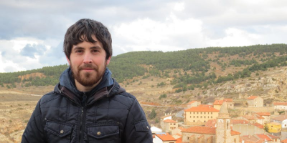Innovation paradigms and technological change in the Galicia agriculture (1890-2000)

Author: Bruno Esperante Paramos
I am currently working on a PhD project on innovation, technological change and the introduction of tractors in Galician agriculture (1890-2000) as part of a larger research project “The great technological and social transformation of Iberian agricultures: old, new and newest paradigms (1950-2000)", led by Prof. Lourenzo Fernádez Prieto and Dr. Daniel Lanero Táboas (University of Santiago de Compostela, Galicia / Spain). My thesis builds upon previous research in the field of Galician agrarian and rural history, most importantly by R. Villares, X. Balboa, L. Fernández Prieto, M. Gabo, A. Cabana, D. Lanero, A. Díaz-Geada and B. Corbacho. The geographical focus of my project is on Galicia, a northwest region of the Iberian Peninsula and one of the most suitable for agriculture due to sufficient rainfalls, mild winters and fertile soils. The importance of pastures and livestock in Galicia contrasts with Mediterranean agriculture or grain farming in the interior of the peninsula.
The chief objective of my research is to identify structural changes in Galician agriculture in the long term, developing an analytical framework that explains how technological change occurred under the specific conditions of farming in the region. I focus in particular on technological change in small family farming and on the introduction of tractors. A key-concept of my work is the “innovation paradigm”, referring to the set of social relations between state, market and society in their impact on inducing (or not) technological change. Every innovation paradigm is characterized by a specific technological offer and by demand. The following three parameters allow us to classify the innovation paradigms in Galician agriculture: the dominant ideological background, the level of agricultural industrialization and the technological horizon of each given moment. The various innovation paradigms are also closely linked to concrete moments in Spanish history: the end of the agricultural crisis in Spain (1890), the Spanish Civil War (1936-1939), World War II and the Fascist era of Francoist dictatorship (1939-1950), Franco’s death and the end of the Dictatorship (1975-1978), and Spain’s entry into the EEC (1986).
I have identified four innovation paradigms:
I expect to complete my thesis in 2019 and plan to write articles on the quantitative evolution of tractors in Spain and Galicia and about US technological transfers to Francoist Spain (1950-1962). I hope to integrate some more general reflection about the historiography of the so-called "agrarian question" by revisiting positions of classic Marxists (Marx, Lenin, Kautsky), the ideas brought forward in the context of peasant studies (Chayanov, Shanin, Wolf) and, finally, the most novel contributions on the historical integration of peasantries in capitalist modes of production, consumption and exchange.
Bruno Esperante Paramos, October 2018
Bruno Esperante Paramos is a visiting research fellow at the Trinity Centre for Environmental Humanities. He is about to complete his PhD thesis on innovation and technological change in Galician agriculture (1890-2000) at the University of Santiago de Compostela (Galicia-Spain), where he has also is a member of HISTAGRA Research Group. His main research interests include rural history, the Green Revolution, innovation, technological change and small family farming.

